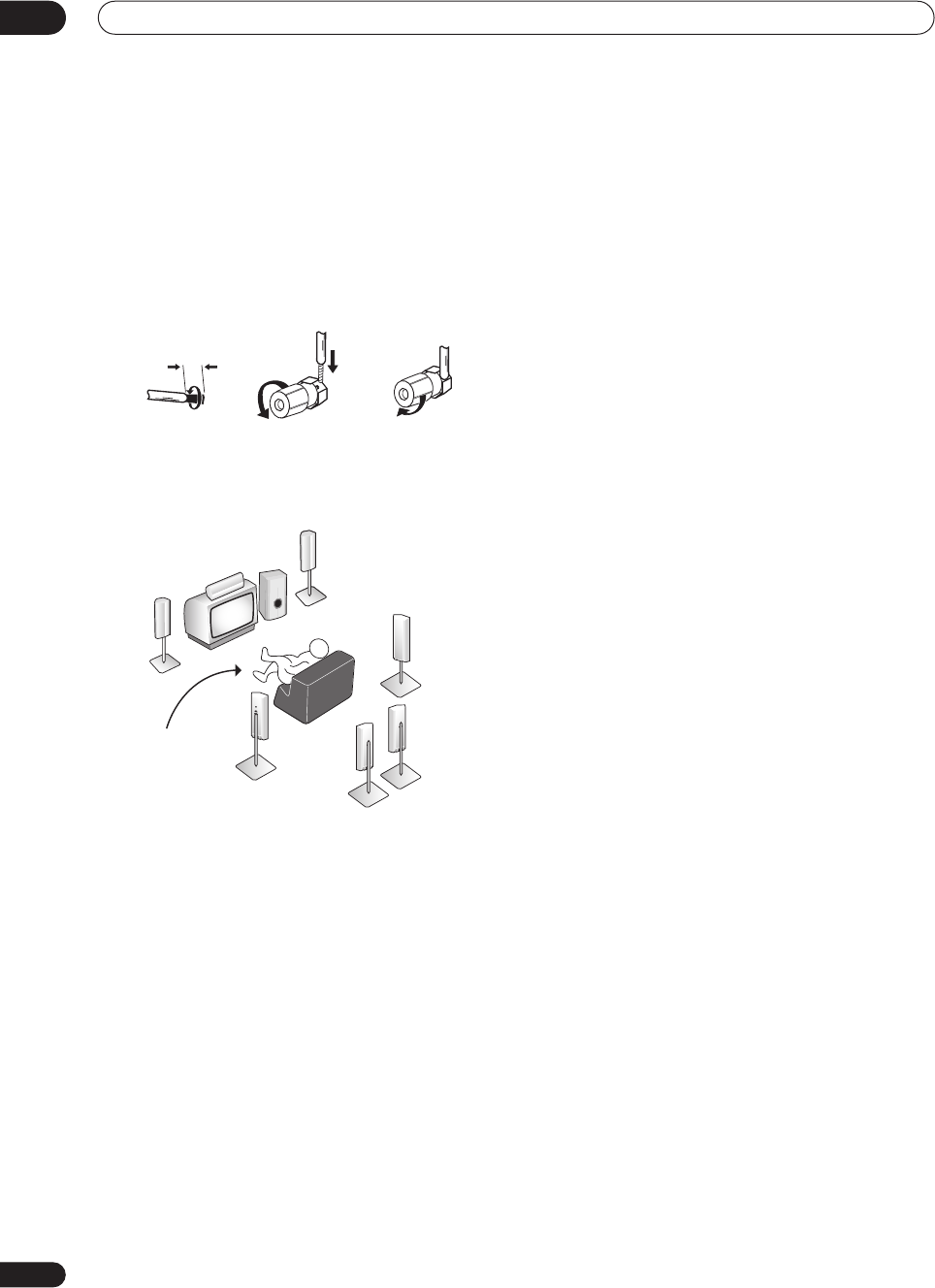
5 minute guide
02
10
En
Make sure that the speaker cable you’re going to use is
properly prepared with about 10 mm of insulator stripped
from each wire, and the exposed wire strands twisted
together (
fig. A
).
To connect a terminal, unscrew the terminal a few turns
until there is enough space to insert the exposed wire
(
fig. B
). Once the wire is in position, tighten the terminal
until the wire is firmly clamped (
fig. C
).
Where you place the speakers will have a big effect on the
sound. Place your speakers as shown below for the best
surround sound effect. See
Hints on speaker placement
on page 21 for more on this.
4 Plug in the receiver and switch it on, followed by
your DVD player, your subwoofer and the TV.
Make sure you’ve set the video input on your TV to this
receiver. Check the manual that came with the TV if you
don’t know how to do this.
5 Use the on-screen automatic MCACC setup to set
up your system.
See
Automatically setting up for surround sound
(MCACC)
on the next page for more on this.
6 Play a DVD, and adjust the volume to your liking.
Make sure that
DVD/LD
is showing in the receiver’s
display, indicating that the DVD input is selected. If it
isn’t, press
DVD/LD
on the remote control to set the
receiver to the DVD input.
In addition to the basic playback explained in
Playing a
source
on page 13, there are several other sound options
you can select. See
Listening to your system
on page 31
for more on this. See also
Making receiver settings from
the System Setup menu
on page 40 for more setup
options.
• If you’re not familiar with the proper DVD settings,
refer to
Checking the settings on your DVD (or other)
player
on page 13.
10mm
fig. A fig. B fig. C
Front
speaker
(L)
Surround
speaker (LS)
Surround
speaker (RS)
Surround back
speaker (SBL)
Surround
back
speaker (SBR)
Center
speaker
(C)
Subwoofer (SW)
Listening
position
Front
speaker
(R)
VSX_1015.book.fm 10 ページ 2005年3月7日 月曜日 午後7時0分


















